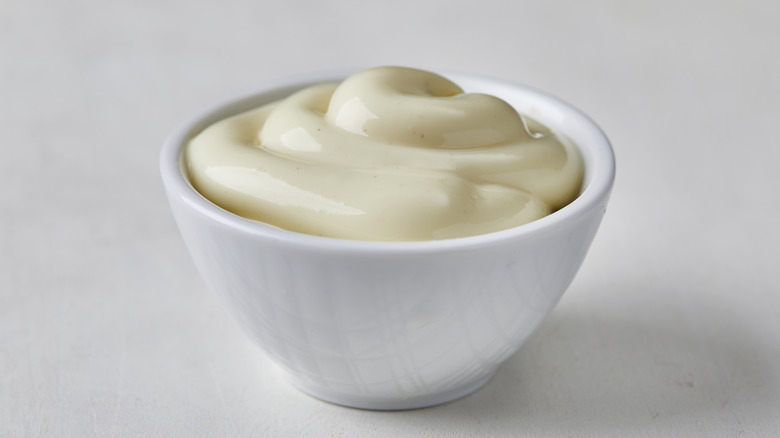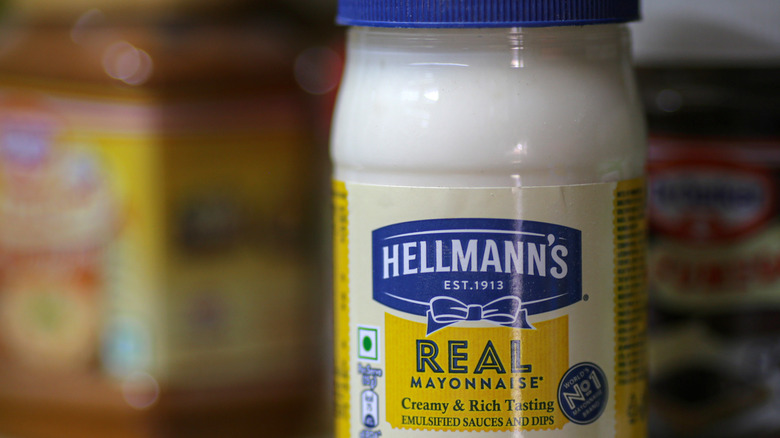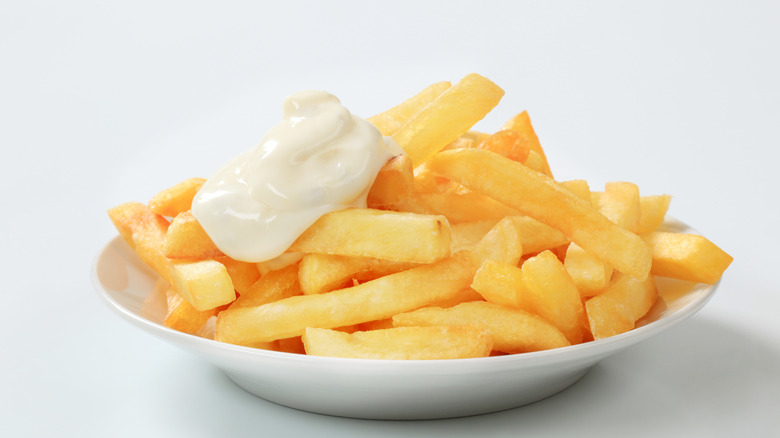The Scientific Reason Mayo Is White Instead Of Yellow
These days, whenever mayonnaise is mentioned in the news, it is either to point out how millennials have killed it or that rumors of mayo's death are greatly exaggerated. Mayo's popularity ebbs and flows just like any other condiment, but perhaps the more interesting question is, why is mayo white when it is made with egg yolks which are yellow?
Even best-selling author Stephen King wondered about this in a tweet, which started a lively discussion. People weighed in on the color difference between homemade mayo (yellower) and store-bought mayo (whiter) and provided their own explanations, which ranged from earnest ("they also use egg whites instead of yolks or whole eggs") to jokey ("because yellow and red were already taken by mustard and ketchup?")
Luckily, science has an answer for this, and the gist is that the aeration and emulsification processes, which are key to getting a stable mayo, change the color from yellow to white.
The aeration process turns mayo white
Before we get into food science, here is a brief overview of mayo. It is made by emulsifying oil -– typically vegetable oil -– with egg yolks and vinegar or lemon juice while Dijon mustard can be an optional ingredient. The emulsification process involves combining two immiscible liquids, in this case, oil and vinegar/lemon juice, into a stable mixture. The egg yolks serve as the emulsifier, helping to bind the oil and vinegar/lemon juice together to create a smooth and creamy texture.
For those who make mayo at home, the process of combining the liquid includes whisking the ingredients either with a standard whisk or a stick blender. This process incorporates air into the mixture (a.k.a. aeration), which oxidizes the mayo and changes the color from bright yellow to white with a yellowish tinge.
Chef Matt Aita told TODAY that in comparison, commercially made mayo is whiter because it is aerated at scale as "large machines mix all of the ingredients together more forcefully than someone would while whisking up a batch in their kitchen."
Emulsification also contributes to the color
The other reason why mayo appears white rather than yellow is thanks to the emulsification process. Oil and water do not mix, but we can force the small oil droplets to disperse through the lemon juice or vinegar water using egg yolks as a binding agent. The oil droplets are still in the condiment, although we cannot see them with our naked eyes.
When light passes through the mayo, the oil droplets scatter and reflect the light in all directions. When light is scattered equally, the emulsion –- or, in this case, mayo -– appears white in color.
Making mayo might seem simple in theory, but it is tricky as the condiment can separate and become a gloopy, watery mess. One frequently repeated tip for making mayo at home is to avoid adding the oil too quickly. Instead, trickle it in slowly so the egg yolks can absorb it. Similarly, adding mustard powder will help stabilize homemade mayo since it is a natural emulsifying agent.
These answers and tips will either encourage you to make mayo at home or scare you off enough that you only use store-bought mayo. Irrespective, it can be an interesting anecdote to tell your mates.


